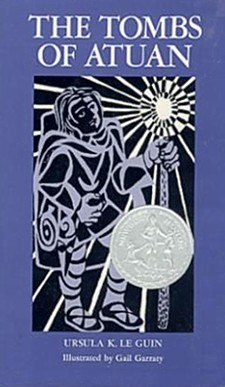With All Hallows' Eve soon upon us, this week, I wanted to give a shout out to a rare gem, a spooky samurai film, Aragami:
Directed by Kitamura Ryuhei, "Aragami" is a low fantasy, horror action film featuring badass samurai and philosophical musings. The movie begins with a pair of seriously wounded samurai who seek shelter from a storm and their enemies in a remote and forbidding temple in the mountains.
Next, one of the previously wounded samurai wakes up to find himself mysteriously healed and that his friend is suspiciously missing. He then finds that the sole inhabitants of the temple are a sinister warrior and a strangely silent woman.
"Aragami" is not a conventional horror film (there are no jump scares), but it does brilliantly succeed in being mysterious and creepy. From the beginning, there's a growing unease as it becomes increasingly clear that something is not right about this lonely temple.
As events unfold and the truth is revealed, things are not what they seem, as the samurai is in for a really bad night.
This movie is part of the Duel Project, a challenge issued by producer Shinya Kawai to Kitamura and fellow director Yukihiko Tsutsumi. The goal was to film a feature-length movie with only two actors, battling in one setting, and to be completed in only one week.
However, despite (or perhaps because of) these limitations, Kitamura manages to put together a film that is both slick and stylish, as well as clever and thoughtful. There's a close feeling, sometimes intimate, sometimes claustrophobic, sometimes terrifying.
Unsurprisingly, "Aragami" seems a lot like a play, having only a single location and only a handful of characters. It's quite atmospheric, with thoughtful ruminations on the nature of war and conflict and the boredom of immortality.
There are also lots of nice touches, such as the weird purple glow in the background for most of the movie and the subtle black humor.
The acting and score are excellent. The fight choreography is also good, if fantastical.
So, if you are a fan of low fantasy, samurai films and/or interesting and clever stories, you owe it to yourself to watch this film! However, don't just take my word for it. Here's a link to the film from the director himself!
Next, one of the previously wounded samurai wakes up to find himself mysteriously healed and that his friend is suspiciously missing. He then finds that the sole inhabitants of the temple are a sinister warrior and a strangely silent woman.
"Aragami" is not a conventional horror film (there are no jump scares), but it does brilliantly succeed in being mysterious and creepy. From the beginning, there's a growing unease as it becomes increasingly clear that something is not right about this lonely temple.
As events unfold and the truth is revealed, things are not what they seem, as the samurai is in for a really bad night.
This movie is part of the Duel Project, a challenge issued by producer Shinya Kawai to Kitamura and fellow director Yukihiko Tsutsumi. The goal was to film a feature-length movie with only two actors, battling in one setting, and to be completed in only one week.
However, despite (or perhaps because of) these limitations, Kitamura manages to put together a film that is both slick and stylish, as well as clever and thoughtful. There's a close feeling, sometimes intimate, sometimes claustrophobic, sometimes terrifying.
Unsurprisingly, "Aragami" seems a lot like a play, having only a single location and only a handful of characters. It's quite atmospheric, with thoughtful ruminations on the nature of war and conflict and the boredom of immortality.
There are also lots of nice touches, such as the weird purple glow in the background for most of the movie and the subtle black humor.
The acting and score are excellent. The fight choreography is also good, if fantastical.
So, if you are a fan of low fantasy, samurai films and/or interesting and clever stories, you owe it to yourself to watch this film! However, don't just take my word for it. Here's a link to the film from the director himself!













